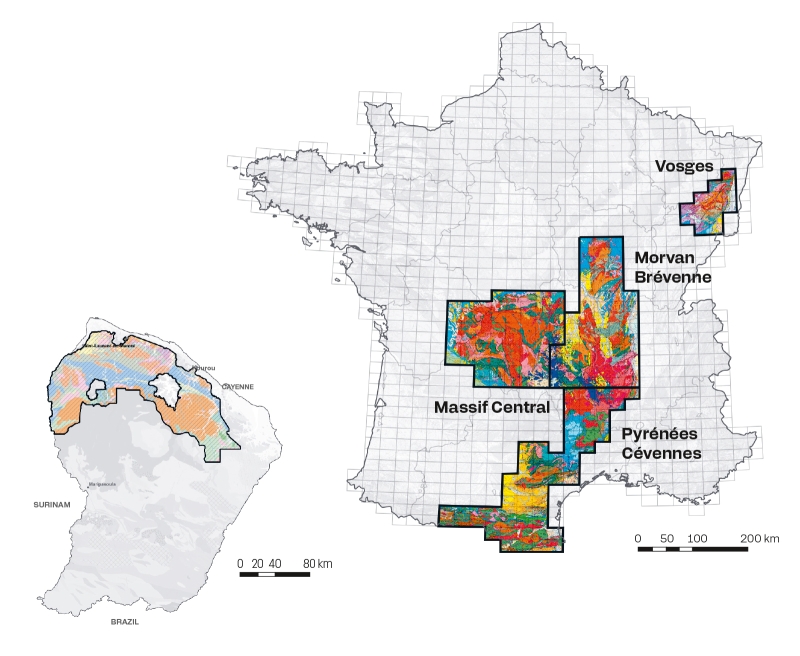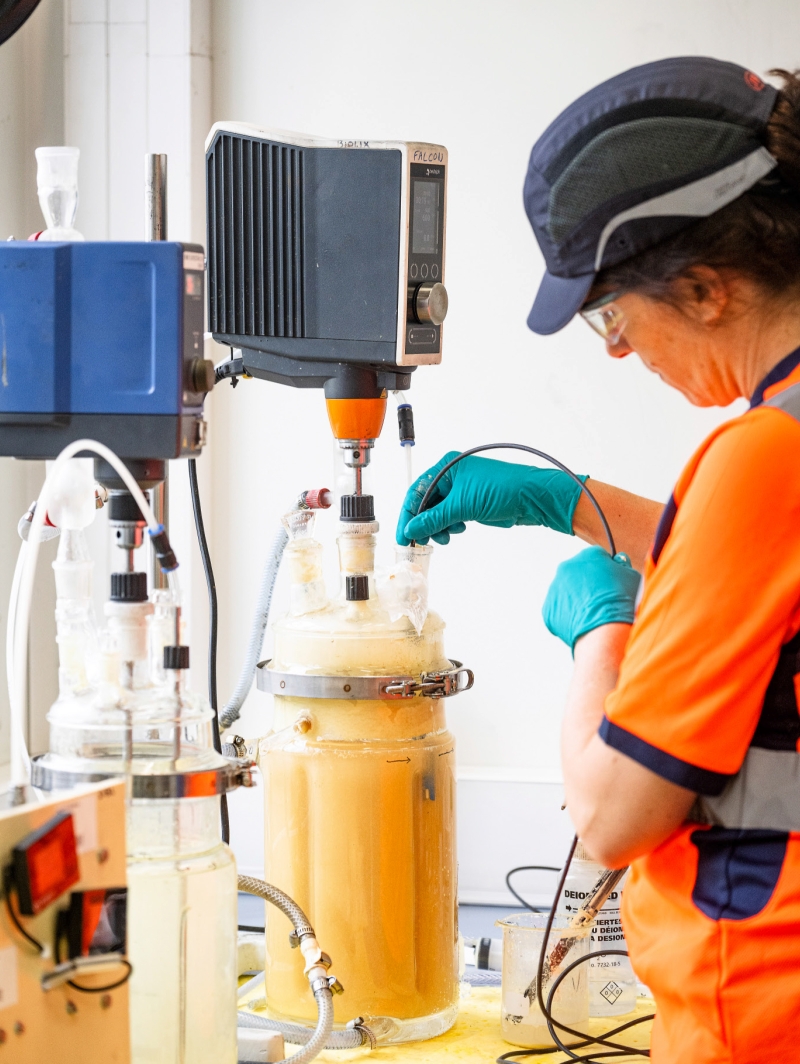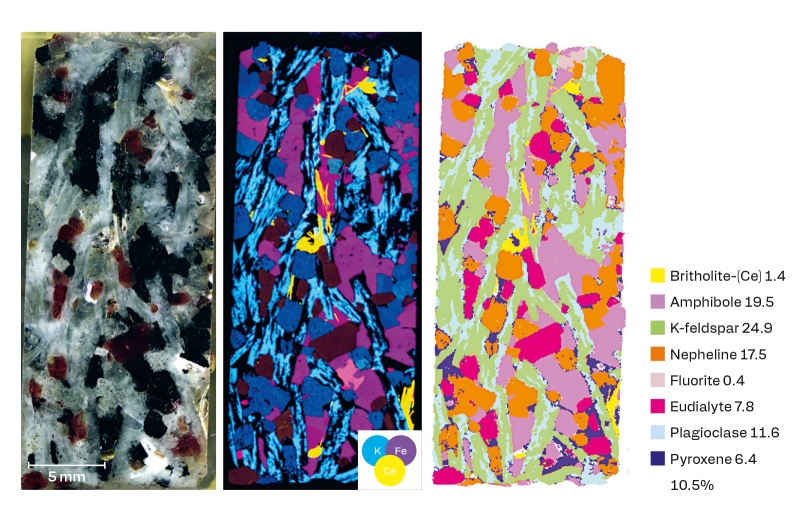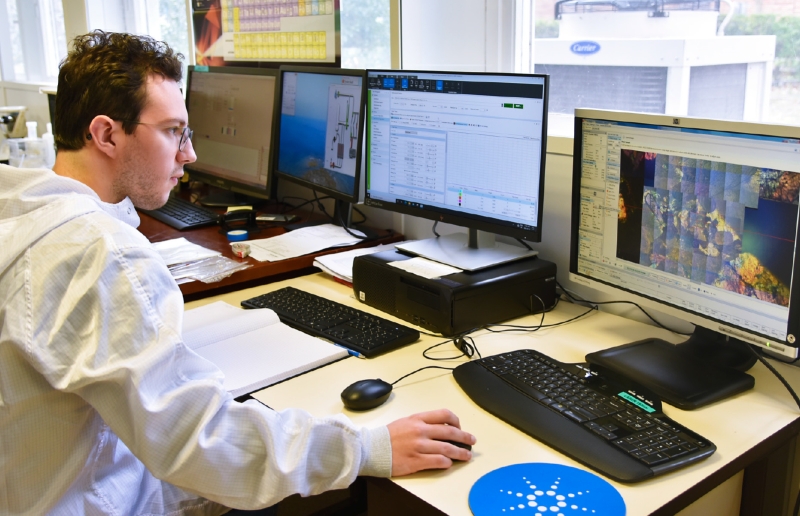Five areas in mainland France and French Guiana are being investigated as part of the project to update the National Inventory of Mineral Resources. © BRGM
Mineral resources and responsible supply
In brief
Mineral resources - Launch of the process to update the national inventory
BRGM has been tasked with updating the Strategic Inventory of French Subsurface Mineral Resources as announced by the French President in 2023. This mission is scheduled to last five years and involves investigating different geographical areas that might harbour valuable mineral materials. Five priority areas have been identified in mainland France and in the French Overseas Territories for data-gathering campaigns. The aim of these surveys is to gain a better understanding of France’s subsurface and support the national strategy for securing supplies of strategic mineral substances, in order to reinforce the resilience of the economy while supporting re-industrialisation.
RAWCLIC, a forward-looking project to support the energy and digital transitions
The RAWCLIC project (funded by Horizon Europe) was launched in December 2024. Coordinated by BRGM, the project aims to improve knowledge, and notably to develop scenarios, concerning the demand and supply of raw materials, according to different time horizons linked to different stages of the energy and digital transitions in the European Union, while also assessing the associated environmental impacts. Bringing together 19 partners (universities, research centres, industrial companies) from 8 countries, RAWCLIC’s objective is to support decision-making on public and industrial policies in order to develop the resilience of Europe’s energy and digital sectors and reduce the environmental footprint of mining and metallurgical activities.
Further developing bioleaching processes
BRGM is continuing to develop bioleaching processes as a technique for recovering metals and minerals contained in mining waste and for recycling used electronic equipment. As part of the European CICERO and XTRACT projects, BRGM is currently carrying out work combining process engineering and microbiology techniques. In addition to conventional (oxidative) bioleaching for sulphides, it is also studying the potential of biological processes on oxidised phases (reductive bioleaching applied to nickel laterite).
Tested on the Plat’inn platform, bioleaching uses bacteria to recover certain metals from mining and e-waste. © Didier Depoorter
Cartomica: supporting quantitative mineralogy
BRGM’s analytical facilities, combined with those of the MACLE-CVL platform, provide access to a wide range of complementary equipment (produced by different manufacturers), combining imaging and chemical-composition analysis technologies. These can be used to produce maps at different scales – from millimetres to decimetres, with resolutions ranging from a hundred nanometres to a few tens of microns – and to characterise samples of various types and levels of granularity. The Cartomica project draws on these technological resources to develop software capable of exploiting all image formats, and proposes algorithms for analytical processing. This tool of the future aims to meet a wide range of needs: mineralogical identification, quantification of granulometry, determination of mineralogical liberation mesh sizes, etc.
The software solution developed by the Cartomica project transforms geolocated chemical analysis data into quantitative mineralogical maps, as seen here for syenite in Greenland. © BRGM
A new partnership cycle with LÉO
The partnership with the Laboratoire d’économie d’Orléans (LÉO), a research unit sponsored by the universities of Orléans, Tours and Clermont Auvergne, was renewed within the framework of the “Subsurface: a Common Good” Priority Research and Equipment Programme (PEPR) and the Chair of Environmental and Mineral Economics, co-financed by the French Research Agency (ANR) and BRGM. A new study, overseen by this Chair, focuses on working and environmental conditions on copper mining sites. The aim is to highlight improvements (or deteriorations) in the conditions, based on the analysis of a worldwide sample of sites.
Traceability of raw-material supplies driven by AI
Based on exhaustive geochemical, crystallographic and mineralogical characterisation, ensuring the traceability of raw materials, whether from mines or recycling processes, generates large volumes of data. This is why BRGM came up with the idea of using artificial intelligence in the MaDiTraCe project. Indeed, machine learning can be used to help detect possible fraudulent declarations concerning the origin of critical raw materials at different stages in their supply chain, based on the results of analyses carried out on samples of materials, from the initial ore to the refined product. For “certified” products, in which the origin of the metals is known and approved as responsible, the calibrated models developed as part of MaDiTraCe will aim to generate a percentage-based prediction concerning the likelihood of different origins.
The MaDiTraCe project (funded by Horizon Europe) is developing digital and geochemical approaches to ensuring compliance with environmental, social and governance standards for critical raw materials. © BRGM









